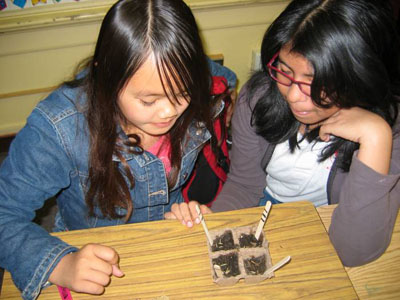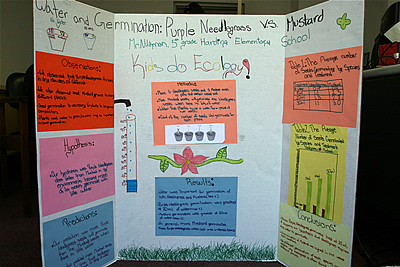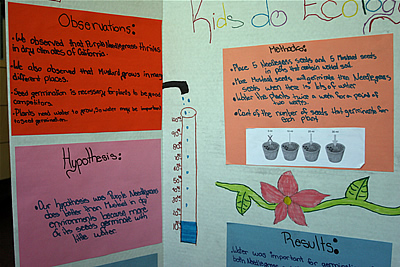|
Harding Elementary School
Teacher: Barry Nitikman
Scientist: Dr. John Orrock and Dr. Drew Allen

Hypothesis:
Our hypothesis was that purple needle grass does better than mustard in dry environments because more of its seeds germinate with little water.

Predictions:
Our prediction was that more purple needle grass will germinate than mustard seeds when there is little water.
We also predicted that more mustard sees will germinate than purple needle grass when there is plenty of water.
Methods: Place 5 needle grass seeds and 5 mustard seeds in pots that contain wetted soil.
Water the plants twice a week for a period of 2 weeks.
Count the number of seeds that germinate for each species.

Observations:
We observed that purple needle grass thrives in dry climates of California.
We also observed that mustard grows in many different places.
Seed germination is necessary for plants to be good competetors.
Plants need water to grow, so weather may be important to seed germination.
Results:
Water was important for gemination of both needle grass and mustard.
Purple needle grass germination was greatest at 20 ml. of water.
Mustard germination was greatest at 30 ml. of water.
In general, more mustard germinated than purple needle grass when soil was watered.
Conclusions:
Since purple needle grass germinated best at 20 ml., it supports our hypothesis that needle grass requires less water to germinate.
Germination of mustard was hightest in the wettest soil conditions.
The different germination of each species may explain why needle grass is often found in many different places.
|

